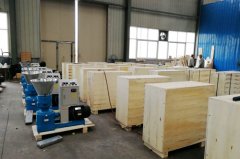How can pine pellet fuel be fully burned without coking?
"Hello, why can't my boiler burn pine pellet fuel?", a client asked me this question. In fact, many first-time users of pine pellet fuel do not understand the combustion conditions of biomass pellet fuel. The following is a summary of the problems that biomass pellet fuels often encounter.

Can coal-fired boilers directly burn biomass pellet fuels?
Coal-fired boilers are generally not suitable for direct combustion of biomass pellet fuels. The structure of biomass pellet fuel is different from that of coal-fired boiler. Coal-fired boiler is designed according to the characteristics of coal, so biomass pellet fuel is generally not suitable for direct combustion in coal-fired boiler.
How can pine pellet fuel achieve full combustion without coking?
Firstly, we need to know what it takes for pine pellet fuel to burn fully. According to the characteristics of biomass fuels, pine pellet fuel generally needs to be gasified to form flammable secondary combustion. Therefore, a sufficiently high temperature is needed in the boiler to gasify the pine pellet fuel. Only when the furnace temperature is high enough can the pine pellet fuel be gasified, and forming combustible gas to realize secondary combustion. Therefore, the burning degree of pine pellet fuel is proportional to the boiler stability. Make sure the furnace temperature is high enough.
Secondly, the combustion of pine pellet fuel requires a large amount of oxygen to achieve oxygen-enriched combustion after gasification. The combustion of pine pellet fuel is different from that of coal. Coal combustion does not need a lot of air, while pine pellet fuel needs a lot of air to improve the volatility of fuel and form gasification oxygen-enriched full combustion. Increased oxygen is also important. If the cold air is blown in, it will reduce the temperature of the combustor, which is not conducive to high temperature combustion. Cold air lowers the temperature and wastes more fuel to raise the furnace temperature, so it is suggested to blow hot air.
As for coking, it is related to whether pine pellet fuel can be fully burned. Only when the furnace temperature is high and oxygen is sufficient, can the occurrence of coking be reduced by fully burning. In addition, burning high-quality pine pellet fuel with low ash content and high calorific value is needed to reduce the degree of coking and the probability of occurrence. Next, see the flames emitted by the biomass burner after full combustion.
Now let's look at how pine pellet fuel can be fully burned without coking. In fact, as long as the right pine pellet fuel is selected and burned in suitable biomass combustion equipment such as biomass boiler or biomass boiler, the full combustion of pine pellet fuel can be achieved.




